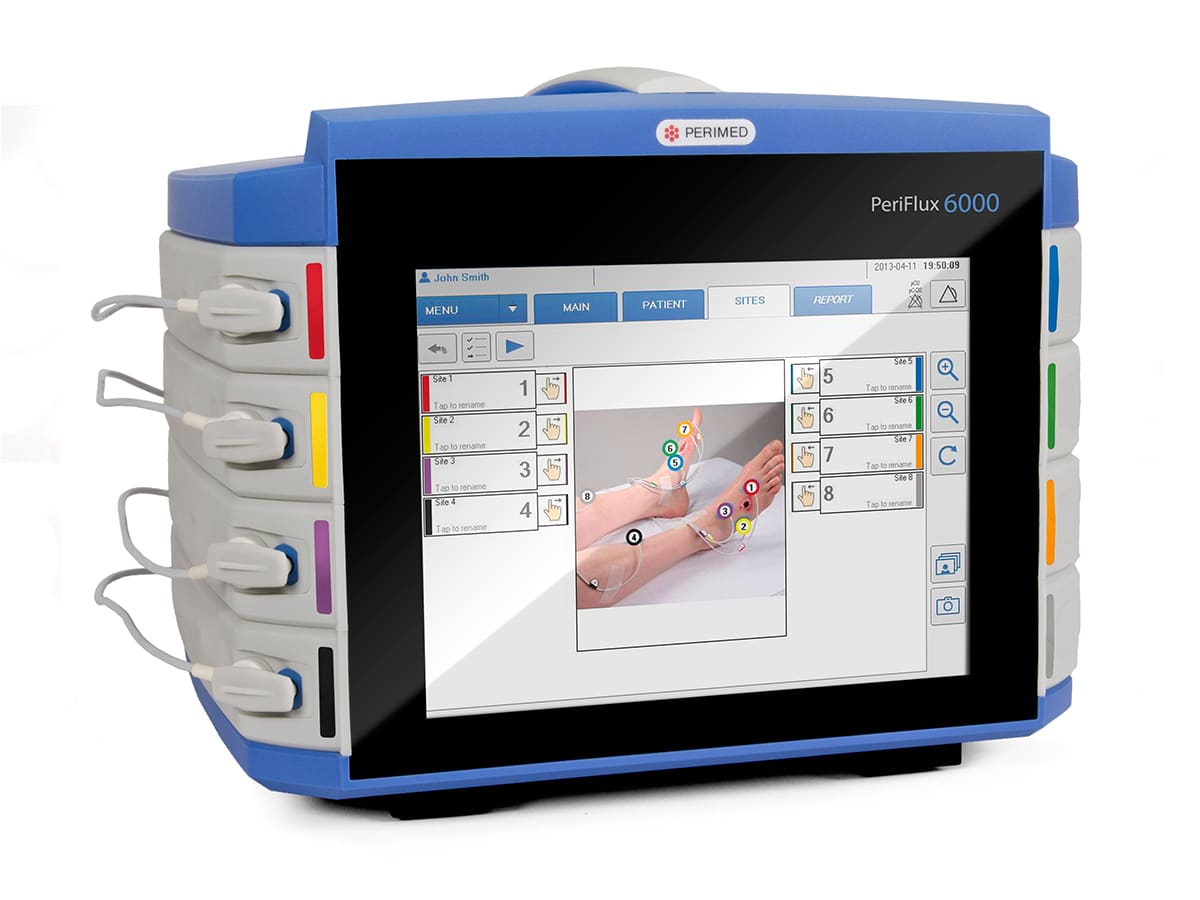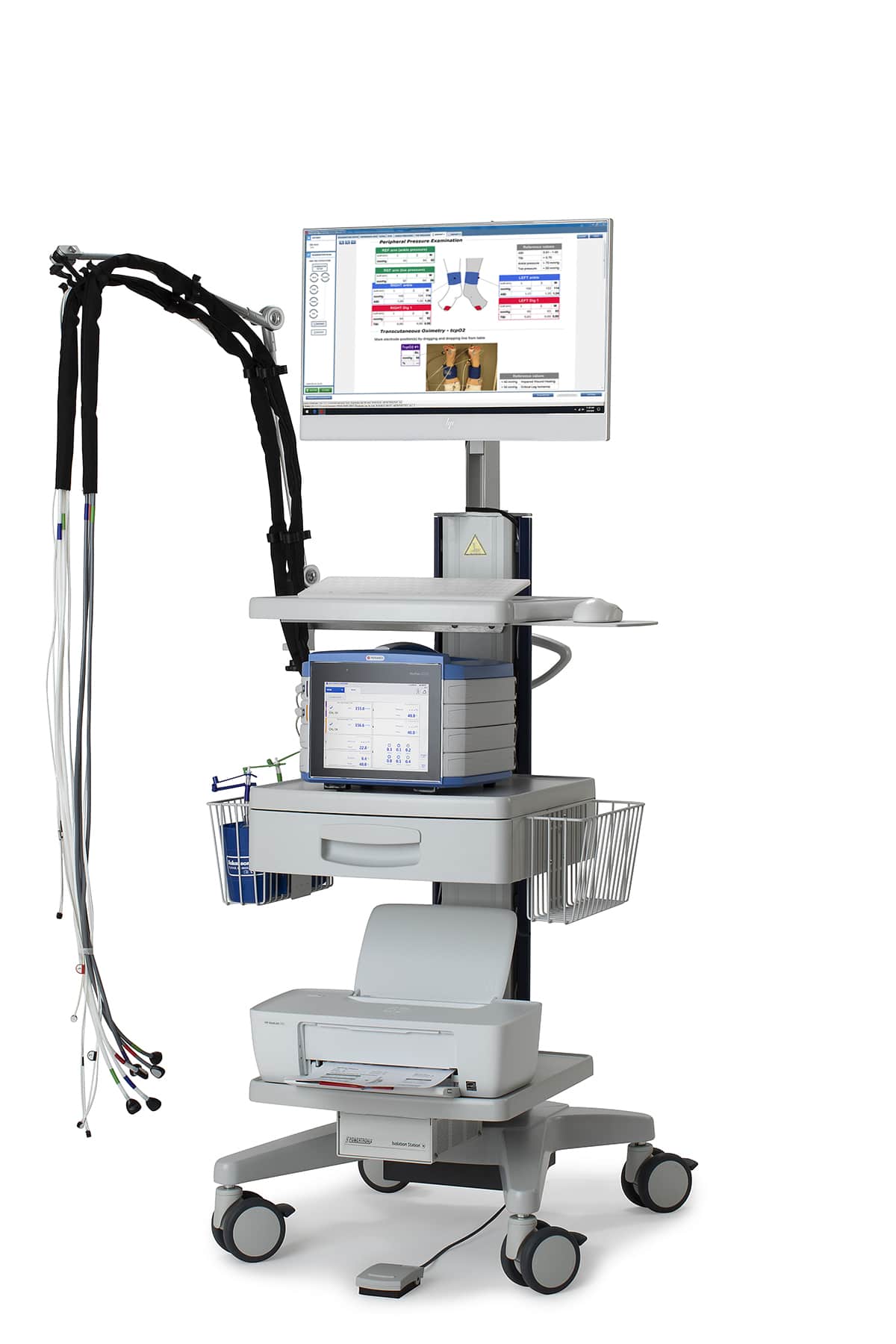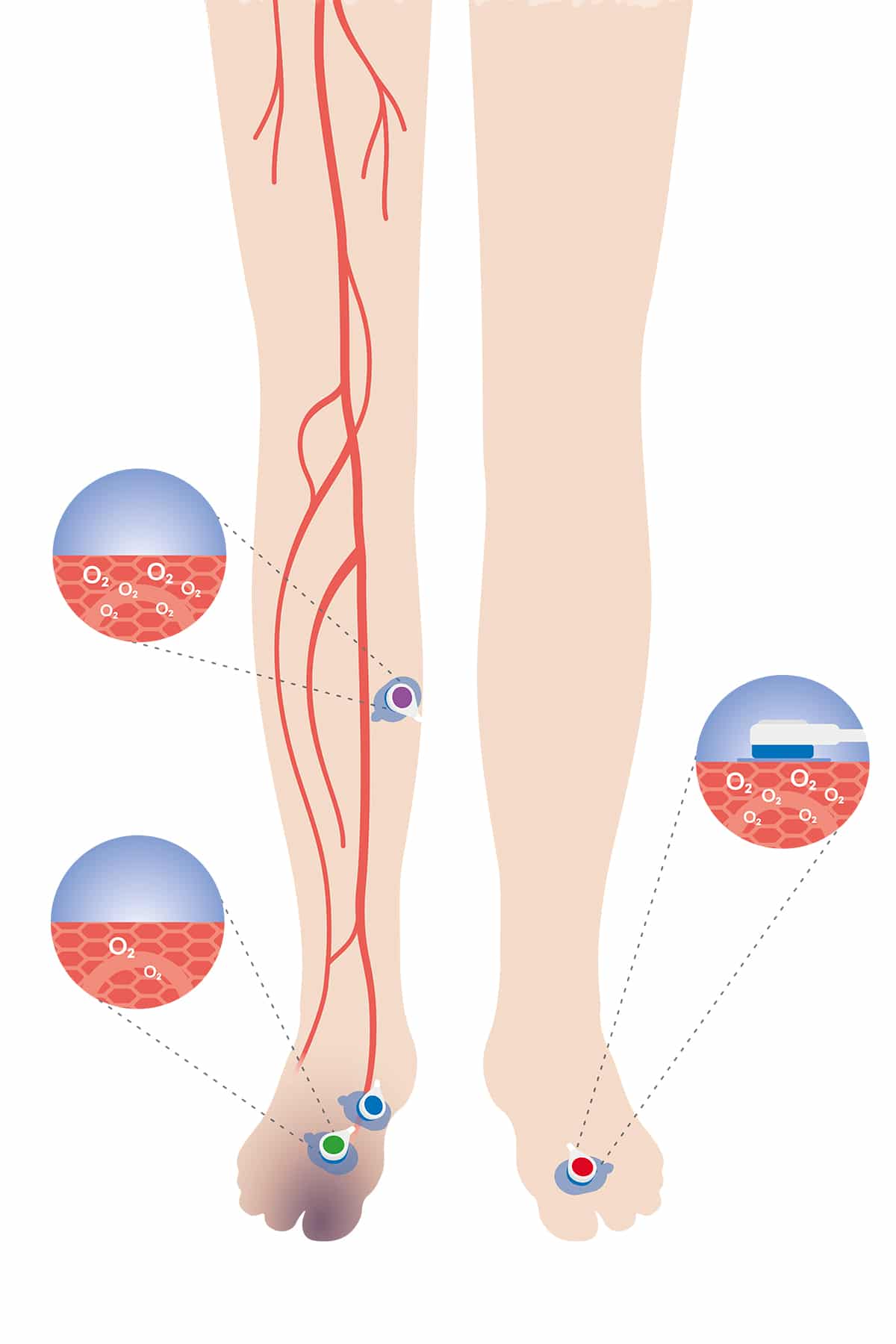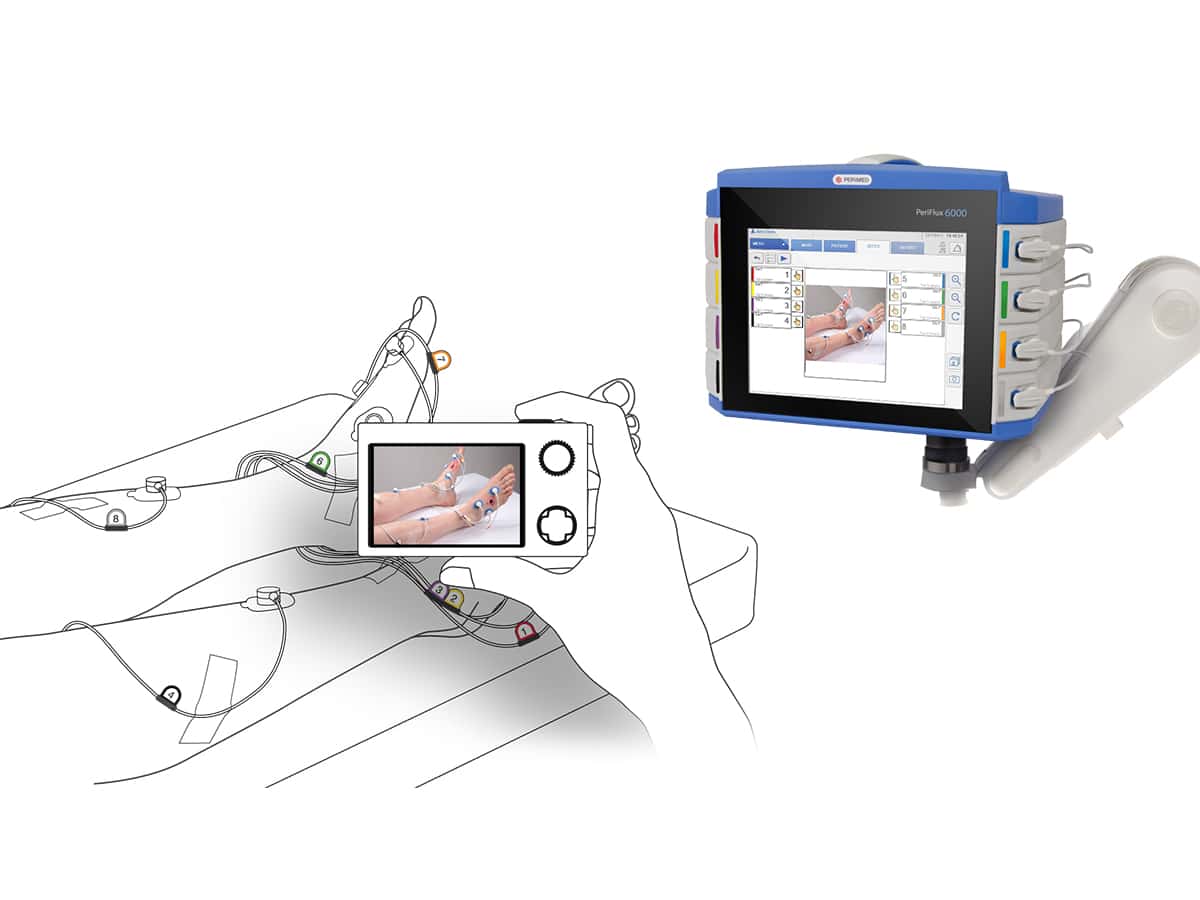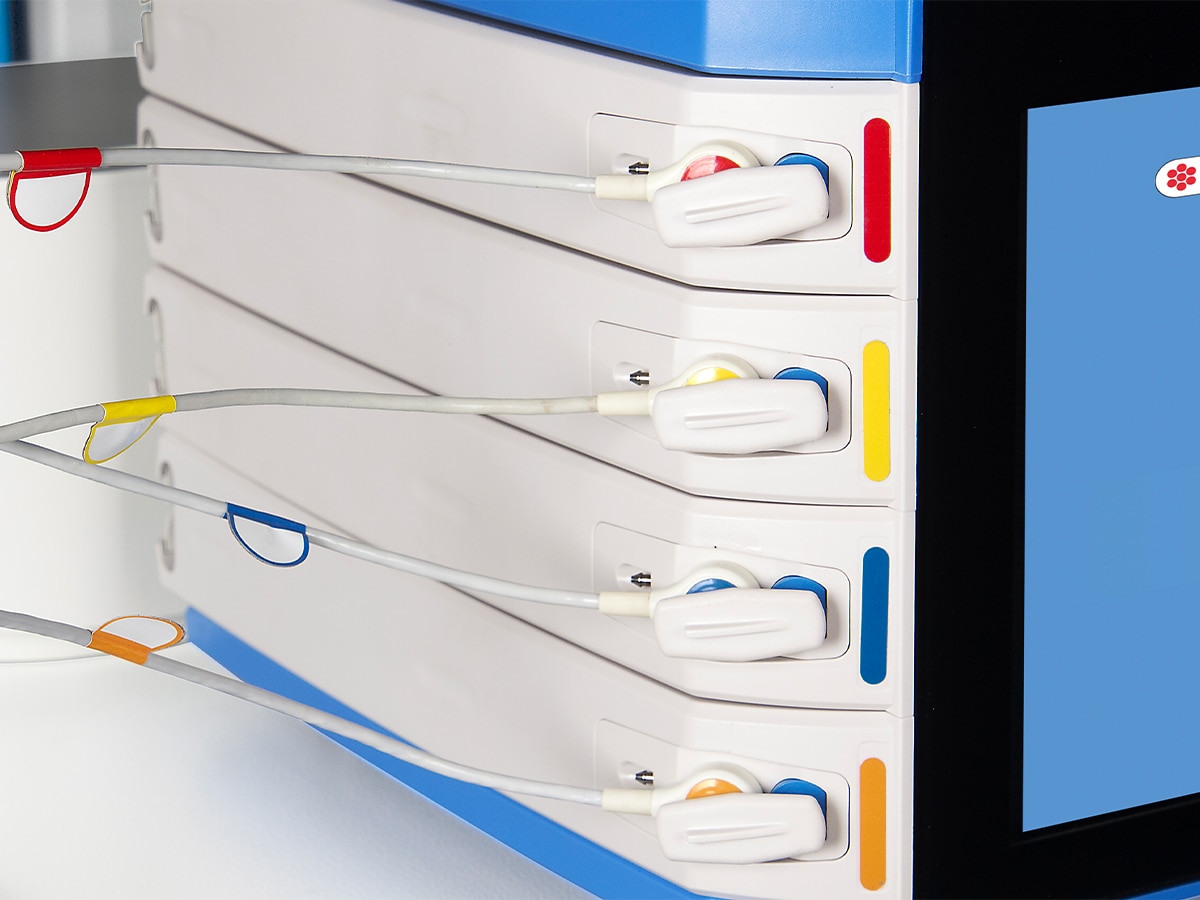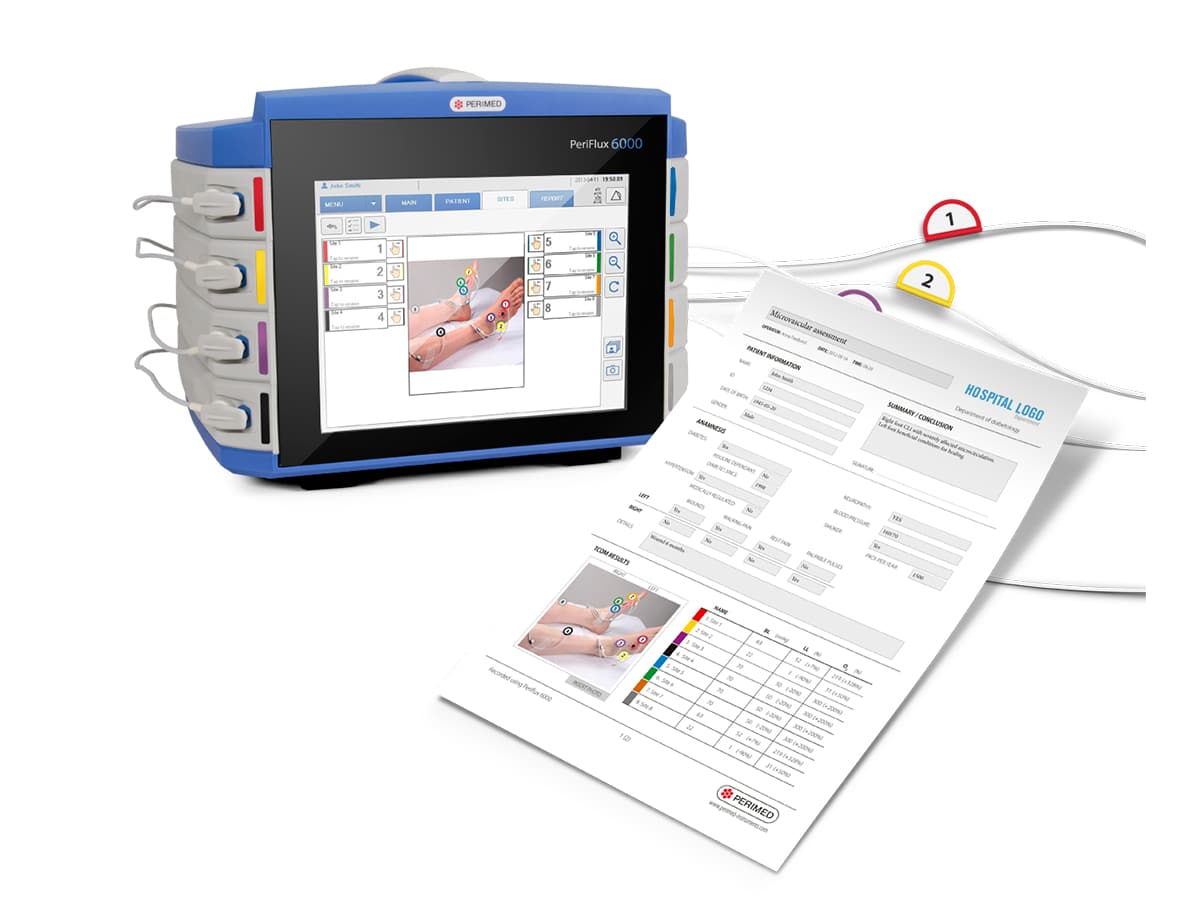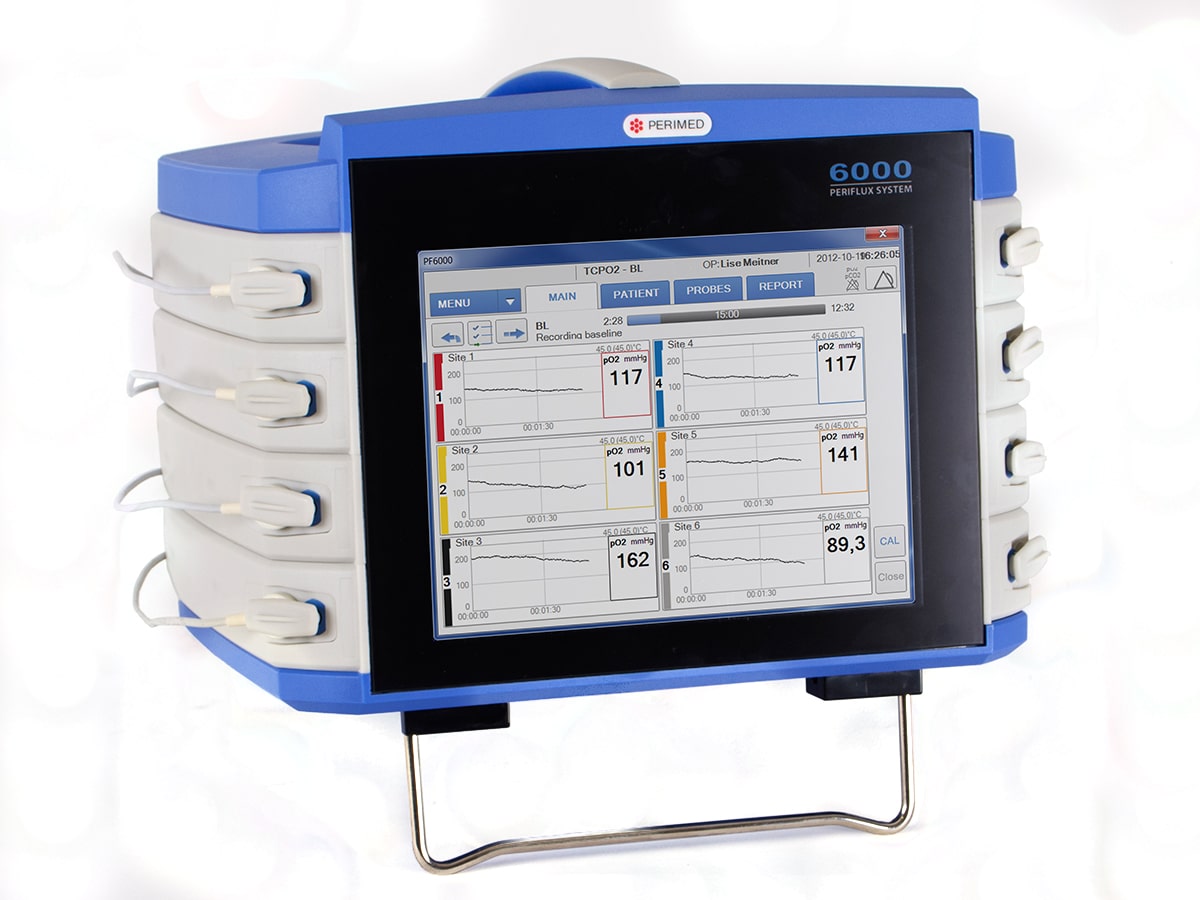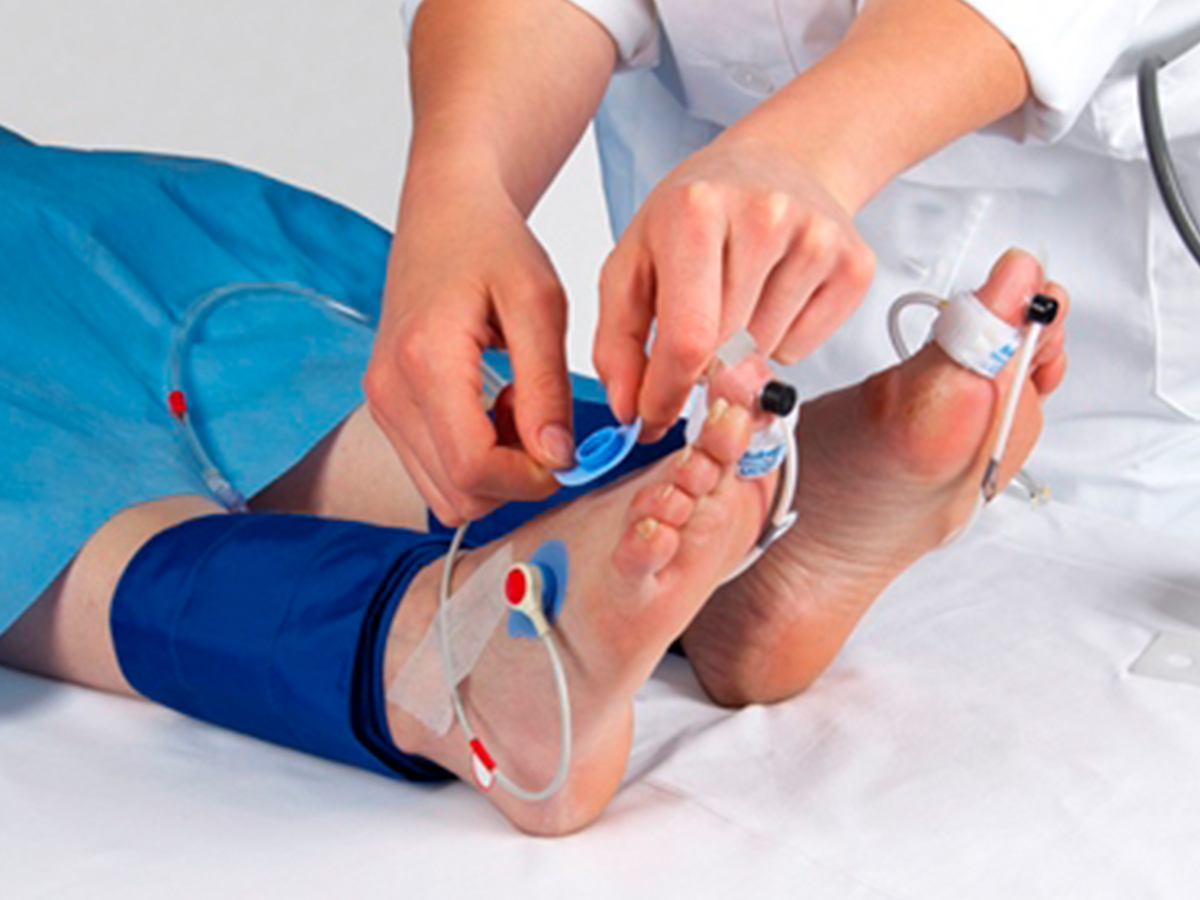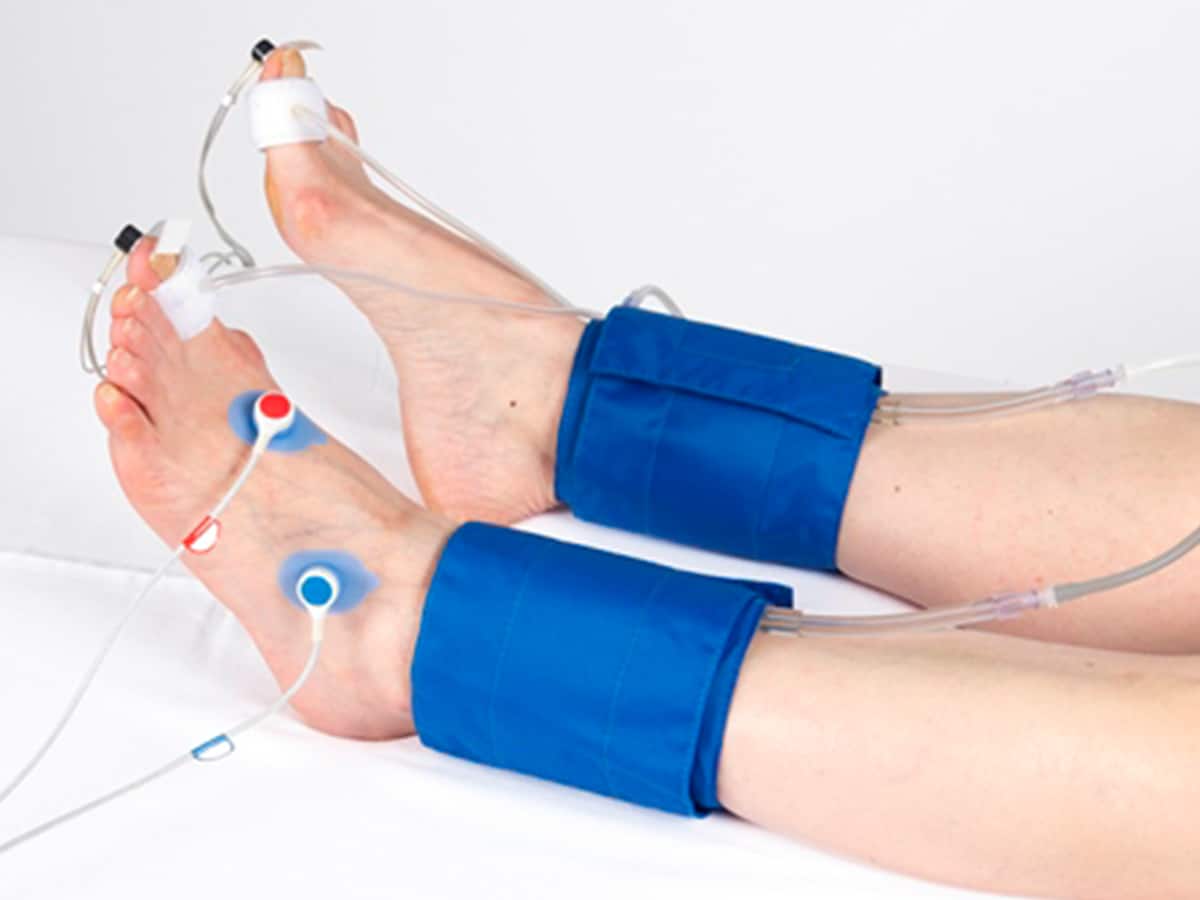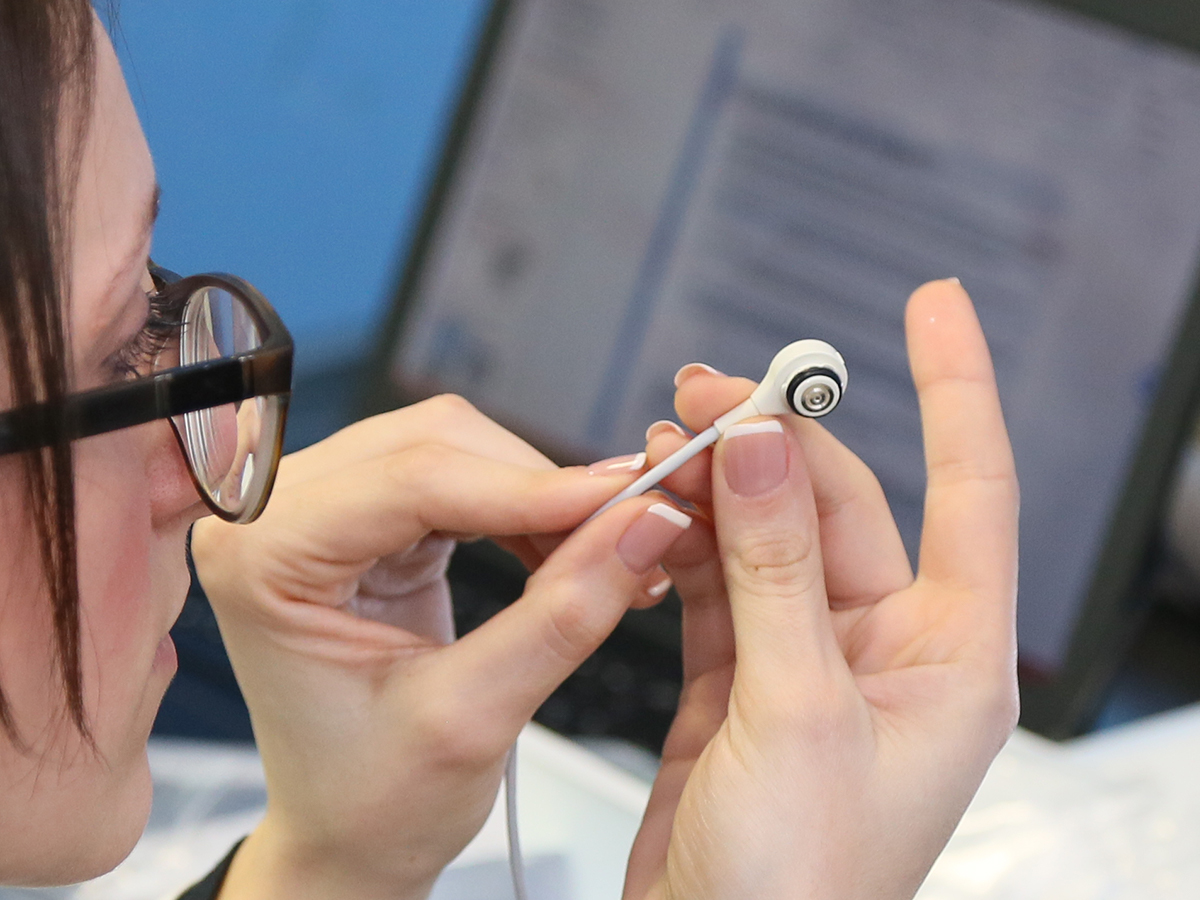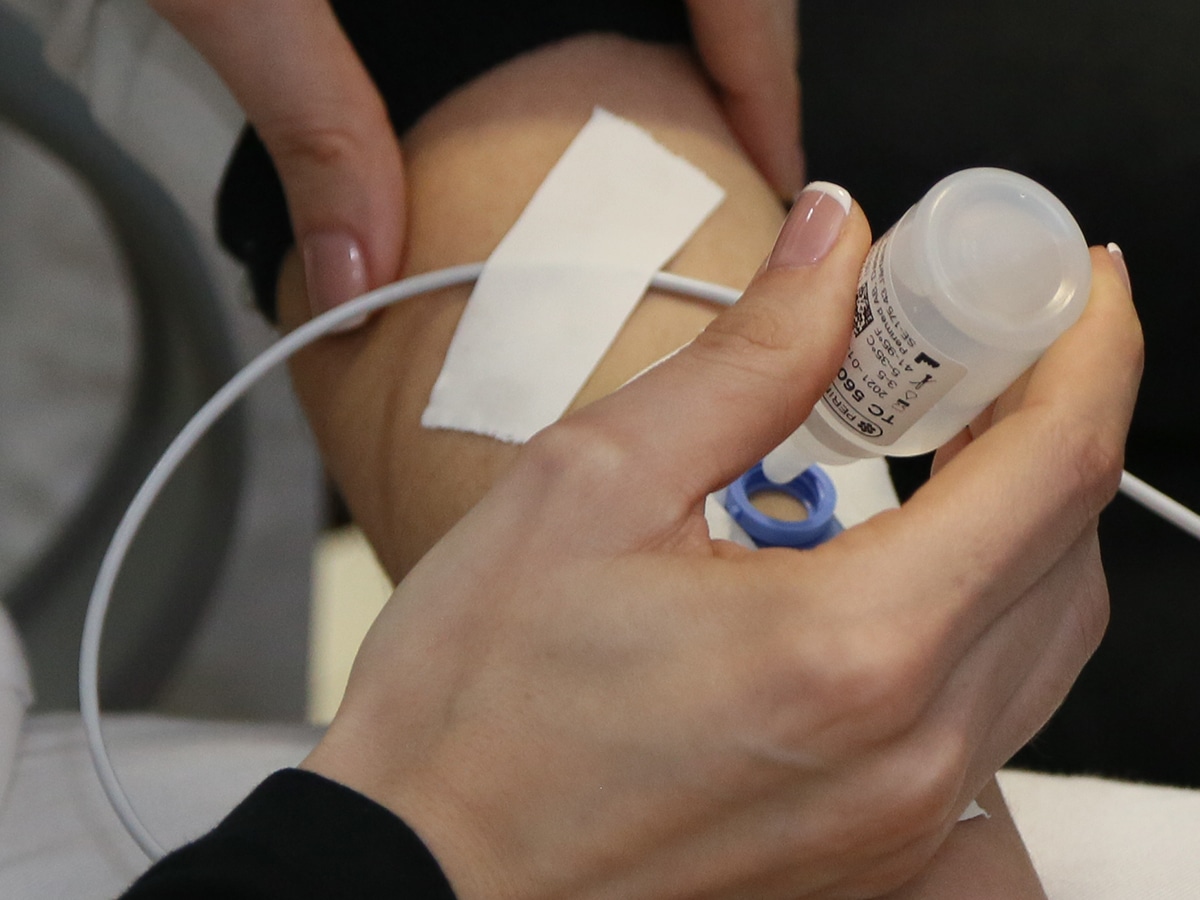Transcutaneous oxygen (TcpO2)
![]()
Transcutaneous oximetry (tcpO2) is the only method to measure the local oxygen released from the capillaries through the skin, reflecting the metabolic state of the lower limb1Noninvasive Arterial Studies Including Transcutaneous Oxygen Pressure Measurements with the Limbs Elevated or Dependent to Predict Healing After Partial Foot Amputation. Karen L. Andrews, MD Mansour Y. Dib, MD Thomas C. Shives, MD Tanya L. Hoskin David A. Liedl, RN Andrea J. Boon, MD. DOI: 10.1097/PHM.0b013e3182876a06.. It is particularly useful for wound healing prediction and qualification for hyperbaric oxygen therapy. In additional to that, research has shown the assessment to be clinically beneficial to determine wound healing potential for patients undergoing amputation when it is done in conjunction with other clinical assessments.2 Transcutaneous Oximetry in Clinical Practice: Consensus statements from an expert panel based on evidence. C. E Fife, D. R. Smart, P. J. Sheffield, H. W. Hopf, G. Hawkins, D Clarke. UHM 2009, Vol. 36, No. 1 – Transcutaneous oximetry consensus statements. . Transcutaneous oximetry is also recommended as a means to quantify the severity of ischemia and to stratify the prognosis in CLTI patients as well as being useful when diagnosing PAD in patients with calcified arteries and amputated toes 3. The impact of transcutaneous oxygen pressure measurement in patients with suspected critical lower limb ischemia Stefan Rosfors, Leila Kann, Thomas Nystrom. International Angiology 2016 Oclober;3S(5):492-7. .
- The only method that provides information about the body’s ability to deliver oxygen to the tissue is tcpO2.
- Spontaneous wound healing will not occur without oxygen reaching the wound area.
- An important tool in patients with diabetes where calcified vessels or missing toes make other methods impossible.
- Transcutaneous oxygen (tcpO2 or TCOM) can provide supplementary information in the decision of appropriate amputation level. (Conte et al. 2019, Benitez et al. 2014).
References:
- Noninvasive Arterial Studies Including Transcutaneous Oxygen Pressure Measurements with the Limbs Elevated or Dependent to Predict Healing After Partial Foot Amputation. Karen L. Andrews, MD Mansour Y. Dib, MD Thomas C. Shives, MD Tanya L. Hoskin David A. Liedl, RN Andrea J. Boon, MD. DOI: 10.1097/PHM.0b013e3182876a06.
- Transcutaneous Oximetry in Clinical Practice: Consensus statements from an expert panel based on evidence. C. E Fife, D. R. Smart, P. J. Sheffield, H. W. Hopf, G. Hawkins, D Clarke. UHM 2009, Vol. 36, No. 1 – Transcutaneous oximetry consensus statements.
- The impact of transcutaneous oxygen pressure measurement in patients with suspected critical lower limb ischemia Stefan Rosfors, Leila Kann, Thomas Nystrom. International Angiology 2016 Oclober;3S(5):492-7.
- Conte MS, Bradbury AW, Kolh P, et. al, Global Vascular Guidelines on the Management of Chronic Limb-Threatening Ischemia. Eur J Vasc Endovasc Surg. 2019 Jul;58(1S):S1-S109.e33. doi: 10.1016/j.ejvs.2019.05.006.
- Mills JL, Conte MS, Armstrong DG, et al. The Society for Vascular Surgery Lower Extremity Threatened Limb Classification System: Risk stratification based on Wound, Ischemia, and foot Infection (WIfI). J Vasc Surg. 2014;59(1):220034.e1-2.
Disclaimer: It is possible that the products on the Perimed website may not be cleared for sale in all markets.

